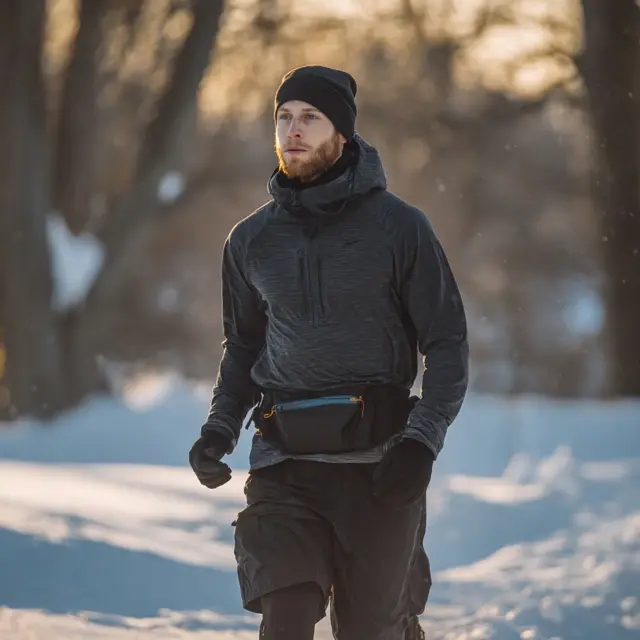How to Choose a Running Belt That Fits Over Winter Layers
Running in cold weather often means wearing multiple layers of clothing to stay warm and dry. But those same layers can make your gear feel bulky, and a poorly chosen running belt may slip, squeeze, or bounce uncomfortably. Selecting a belt that fits seamlessly over winter layers is essential for both comfort and performance. Here’s how to find the right one for your cold-weather runs.
Why Winter Layers Change the Fit
A belt that feels snug in summer may not fit properly once you’re wearing tights, base layers, and insulated jackets. Winter clothing adds:
- Bulk: Extra padding around the waist or hips can make belts feel too tight.
- Slippage: Smooth outer layers may cause belts to slide or shift.
- Restricted access: Zippers and pockets may be harder to reach under gloves or layers.
Step 1: Prioritize Adjustability
Look for belts that can adapt to different clothing thicknesses:
- Expandable straps: Allow for a wide fit range without compromising security.
- Dual adjustments: Distribute tension evenly for stability over bulky gear.
- Elastic flexibility: Provides snugness while adapting to movement and layering.
Step 2: Choose Wide, Supportive Bands
A wider band distributes pressure evenly across your waist or hips, preventing the belt from digging into thick clothing seams. Wide belts also provide more grip, reducing the chance of sliding on outer layers.
Step 3: Look for Weather-Resistant Fabrics
Winter running often means exposure to rain, snow, and wind. Your belt should protect your essentials with:
- Water-resistant materials: Keep phones, keys, and cards safe.
- Durable stitching: Withstands cold and repeated stretching over layers.
- Insulated compartments: Help preserve phone battery life in freezing conditions.
Step 4: Test Stability in Motion
Layered clothing can make belts shift unexpectedly. To ensure your belt stays put:
- Load it with essentials and jog in place to test bounce.
- Check for sliding on smooth jacket materials.
- Make sure closures are accessible even with gloves on.
Step 5: Safety and Visibility
Winter runs often happen in low light. Belts with built-in reflective strips or high-visibility colors help keep you safe in snowy or dim conditions. Some belts also integrate LED lighting for added security.
Practical Tips for Cold-Weather Runners
- Wear your belt slightly lower on the hips for better stability over layered jackets.
- Keep items like gels or cards in outer compartments for easier access with gloves.
- Wash your belt frequently—salt and moisture buildup from snow and sweat can damage fabrics.
Conclusion
The right running belt for winter should fit comfortably over multiple layers, remain stable during varied movements, and protect your essentials from the elements. By focusing on adjustability, wide supportive designs, and weather-resistant fabrics, you can ensure your belt enhances—not hinders—your cold-weather performance.
For more insights, explore our cold-weather running gear guides and winter training safety tips.




